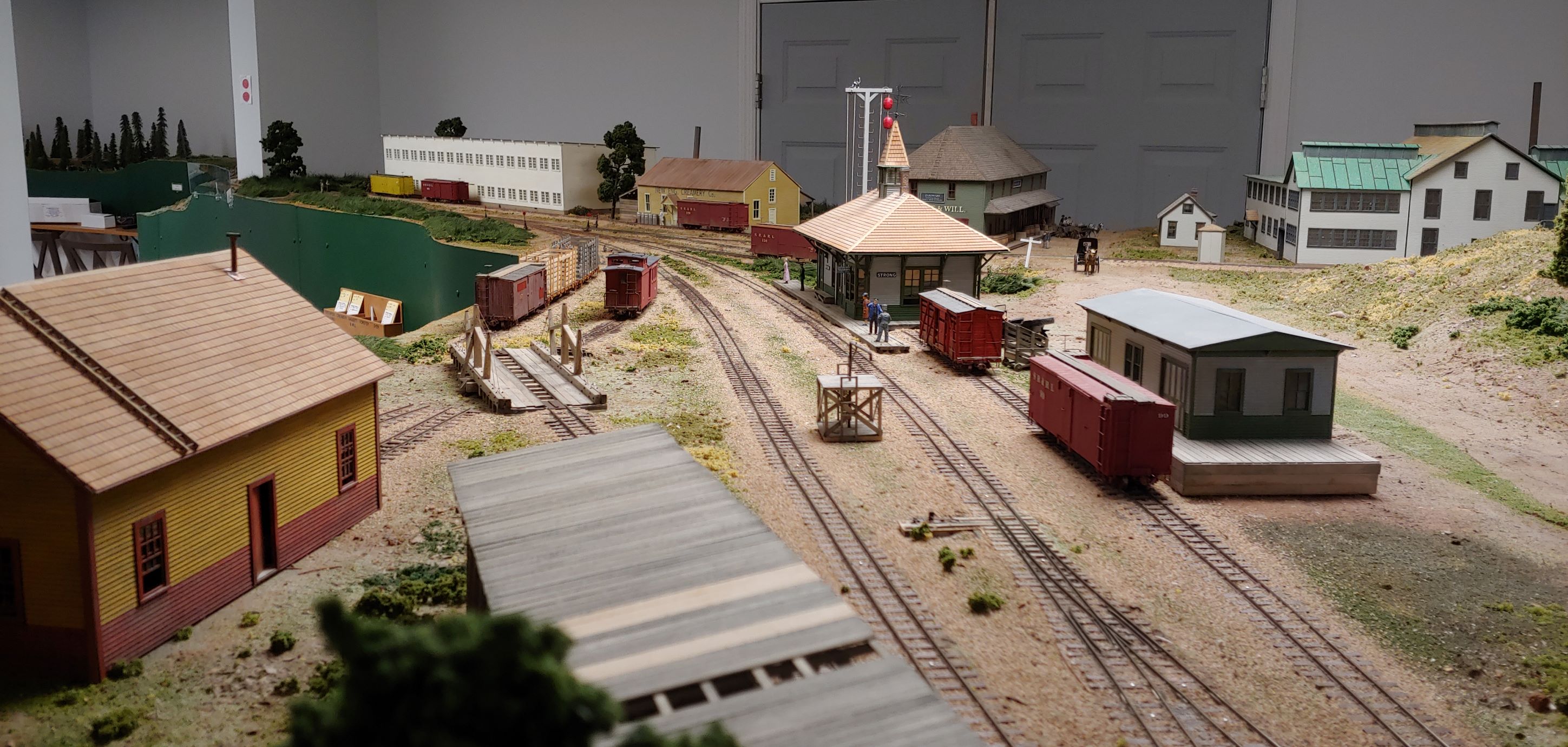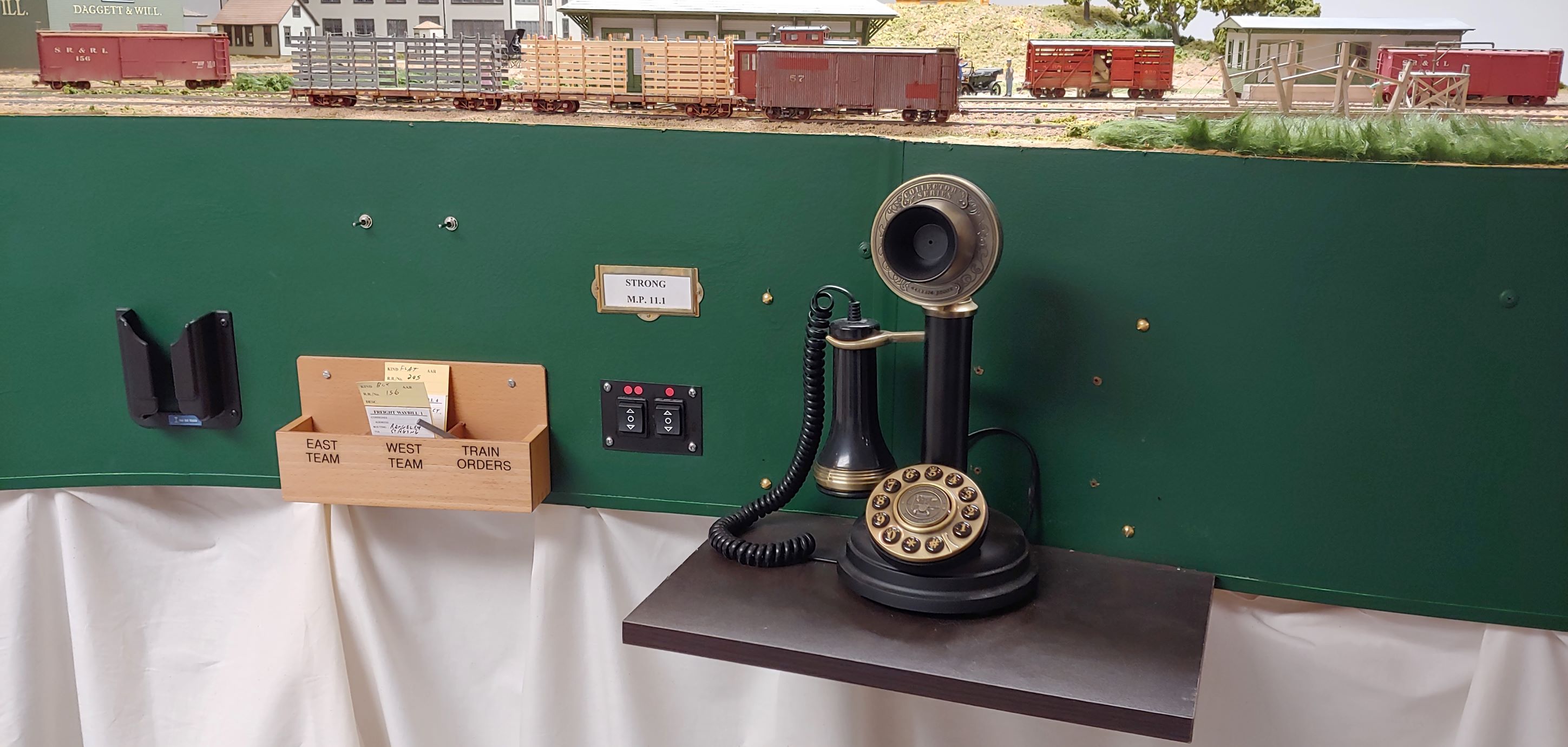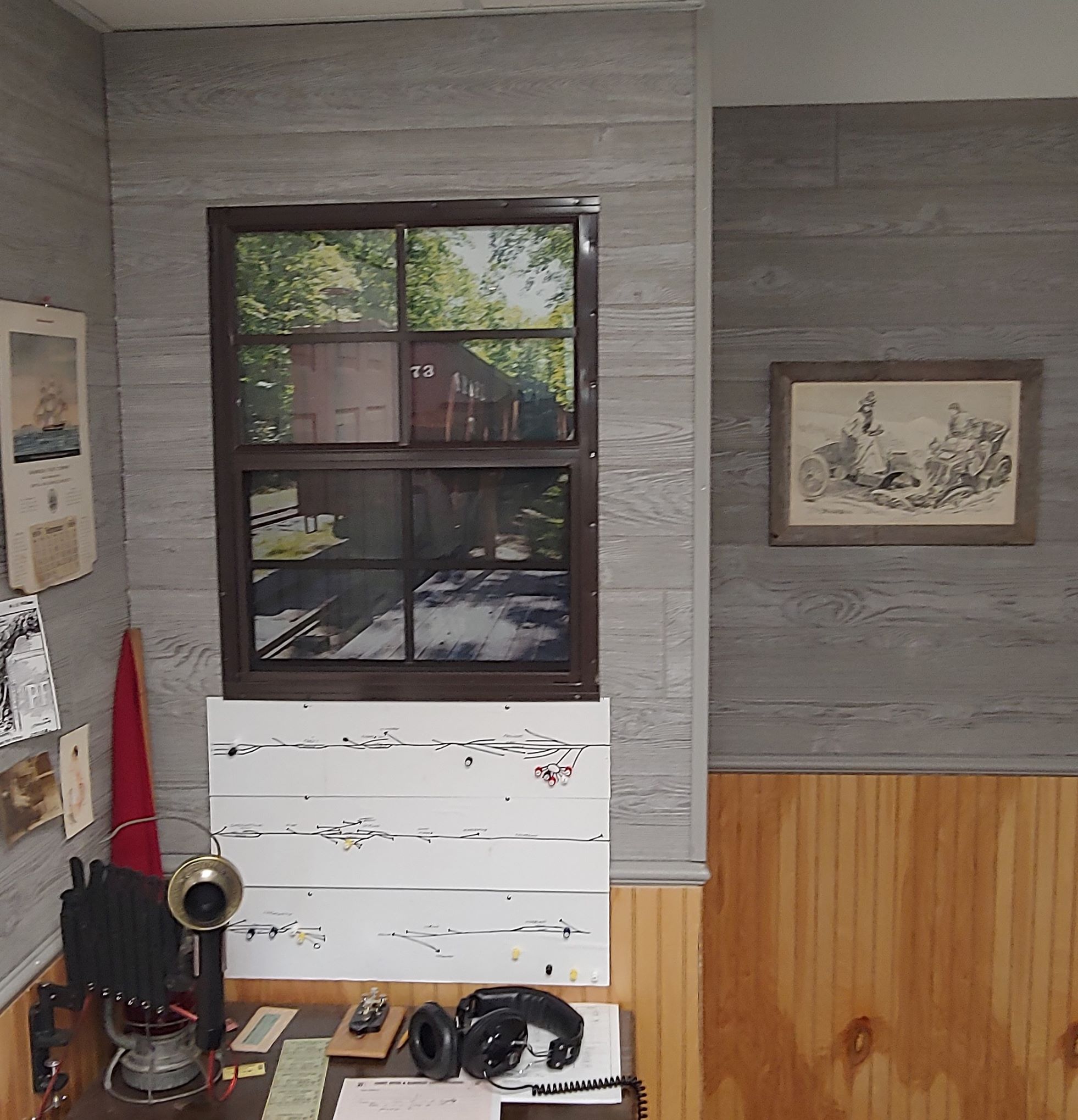The Sandy River & Rangeley Lakes Railroad
in On2, ca. 1919
By:
Albert Churella, MMR

Click HERE for a video of the layout, made by my friend and fellow model railroader Bob Wood, from EMS Productions
I have been involved in On2 for nearly 20 years, but since 1996, my goal has been to model the SR&RL as accurately as possible, as it existed during the summer of 1919. I am fortunate to have a large walk-out basement, encompassing about 1,800 square feet. Even so, 46"-radius curves and #8 turnouts will require that I build the layout on two levels. I have described several stages of the design and construction process in issues of the Maine Two-Foot Quarterly. The track plans shown below represent my initial planning efforts. I have made some changes, as you can see from the photos. Nevertheless, I have been quite successful in my goals, which include:
-
Modeling as much of the SR&RL as possible
-
Modeling the track layouts as accurately as possible, in order to permit prototypical operation
-
Modeling all major structures as accurately as possible with minimal selective compression
-
Arranging the tracks so that viewers will see a scene that "looks" right – i.e., they won't have to look down the hill at Farmington, toward the Sandy River, when virtually all prototype photos were taken from the other direction
-
Avoiding duckunders wherever possible, allowing engineers to follow their trains around the layout with a minimum of effort – not an easy thing to do, with the railroad having what is essentially a wye at Strong
I completed several sections of the layout, including the Phillips yard and the Rangeley / Marbles area, prior to moving into our current house in 2001. I spent the next several years building cars and structures, while working on all of the necessary installation of drywall, suspended ceilings, lighting, etc. The mainline between Phillips and Strong was in place by the summer of 2005, with work then proceeding north from Phillips to Reeds and South from Strong toward Farmington. All of the On2 and O-standard track is in place at Farmington, with the SR&RL / MEC station completed, and scenery added in the summer of 2015. Aside from the Rangeley / Marbles area, I have not done much with the upper level -- there are always little glitches to fix on the lower level, and there is a reason why they call this scale "no-run-2"!
While I do not follow strict timetable and-train order operating methods, I do like to capture the flavor of railroad operations in 1919. That means no radios of course. Crews are required to call the dispatcher from repurposed candlestick phones (like the one shown here, at Strong). The whole thing works thanks to the electronics expertise of Seth Neumann at Model Railroad Control Systems.

The dispatcher's desk is here, with a window looking out on a photograph of SR&RL boxcar #, parked in front of what is supposed to be a depot platform. The track schematic is on paper glued to sheet sheets, enabling the dispatcher to track train movements using small magnets.

If you would like to ride along the Sandy River & Rangeley Lakes during the summer of 1919, please follow the links below:
Following the Franklin & Megantic Toward Kingfield
For a current version of the trackplan, click HERE
For an older version of the trackplan, to see how the layout design has evolved:
Click HERE for the lower level and click HERE for the upper level.
Send me an e-mail
©



